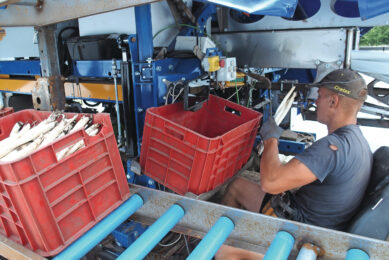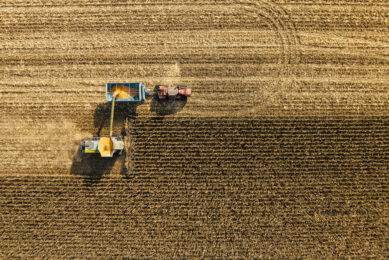Farmers see driverless tractors becoming a reality sooner than expected

Pim Sturm, a Dutch contractor, was initially skeptical about the feasibility of an autonomous tractor on his farm. However, after a few weeks of testing, he’s increasingly convinced that there are real market opportunities ahead. “Especially now that the tractor can autonomously reverse and maneuver on tight headlands,” he says.
GPX Solutions, the developer and supplier of iQuus Autonomy, has converted a New Holland T6.180 into an autonomous vehicle for this year’s NPPL project. Contracting company Sturm-Jacobs in Wieringerwerf was the first to operate the tractor for a week. “I was pleasantly surprised by what the tractor can do,” says arable farmer and contractor Pim Sturm from Wieringerwerf (North Holland). The autonomous tractor worked several fields using a rotary harrow and exceeded expectations.
In the field, we meet Denny Stam, who is responsible for the autonomous New Holland. He is enthusiastic as well: “It works, and it works quite simply.” Denny is experienced with GPS systems and related technologies, and according to his employer, he’s quite skilled with them. “After 10 minutes of explanation, I understood how it works and was ready to go,” Denny says. He was able to map the field and program the tractor’s route on his own—no helpdesk needed.
Measuring the field is not always necessary either. When plot boundaries are available in a shape file or KML file, iQuus can import them. Occasionally, he noticed the mouse moving on the screen: “Apparently, someone in Wageningen was working on it.” The system can be accessed remotely as if the operator were sitting in the tractor, and some parameters were also adjusted this way.
Last year, an iQuus-equipped tractor could already perform autonomous tillage, but it can now also reverse autonomously to make short turns on the headland.
Simple tasks
Sturm-Jacobs deployed the tractor for rotary harrowing. Once set up, this is relatively simple work that normally takes many hours, even though the driver is mostly just turning the tractor on the headlands. iQuus now handles all of that. Trust in the system grew quickly, to the point that they confidently let the tractor work alone. “I would go do something else in the meantime,” says Denny.
Of course, some limitations remain. There were a few posts in the test field, and the tractor does not automatically navigate around them. Instead, the LiDAR sensor in the front bumper brings the vehicle to a halt. You can, however, take such obstacles into account when planning the route.
Currently, there is no real-time work verification. As the soil dried out, the rotary harrow began producing dust. If the dust becomes a cloud, the LiDAR sensor may perceive it as an obstacle, causing the tractor to stop. Adjusting the sensor’s sensitivity can help reduce this. In dusty regions like Australia, they often use radar as a solution.

Side panel breaks off
Something that had never happened in years at Sturm-Jacobs occurred with the autonomous tractor: a side panel of the rotary harrow broke off. The tractor simply kept going. While not disastrous, it’s something you’d want to repair quickly.
Something that has not happened yet—but inevitably will—is a broken shear bolt in the driveline. In that case, the tractor would also just continue. Many of these technical issues are solvable, but it is only a matter of time and development.
Major progress
Pim Sturm was initially skeptical about the practicality of an autonomous tractor for their business. But he is now increasingly convinced that there is a place for it in the market—especially since the tractor can now reverse autonomously and turn on short headlands.
He sees potential particularly in simple but time-consuming operations, such as tilling or rotary harrowing, especially when combined with seeding or planting. “If the autonomous tractor stalls temporarily, you’re nearby to get things going again.”
Autonomous onion seeding, however, is a task he does not yet see happening without human supervision. “In practice, it turns out you still need to monitor that closely.” Implements will need to become smarter to prevent as many potential malfunctions as possible.
In the case of the autonomous tractor tested by Sturm-Jacobs: reversing and turning works well, but there was no obstacle detection at the rear. Ideally, the system should have 360-degree monitoring.
There is still a way to go—autonomy won’t take over the entire market—but at Sturm-Jacobs, they’re now convinced it will find its place.
Join 17,000+ subscribers
Subscribe to our newsletter to stay updated about all the need-to-know content in the agricultural sector, two times a week.



